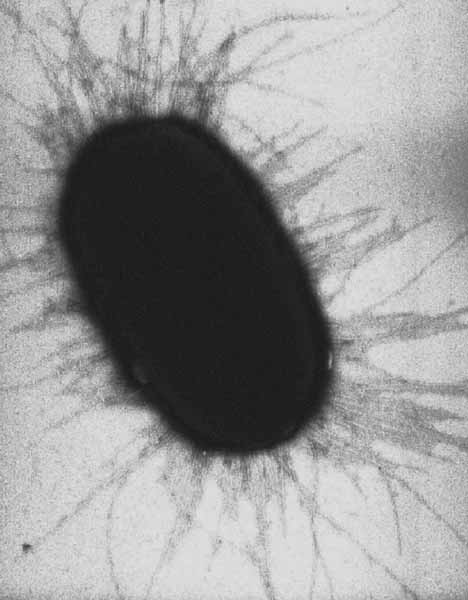 | ||||
What Are Bacterial Fimbriae? - P2
You have free access to a large collection of materials used in a college-level introductory microbiology course. The Virtual Microbiology Classroom provides a wide range of free educational resources including PowerPoint Lectures, Study Guides, Review Questions and Practice Test Questions.
SPO VIRTUAL CLASSROOMS
Fimbriae and Neisseria gonorrhoeae
Gram-negative bacteria, such as Neisseria gonorrhoeae, have fimbriae that allow them to attach to host cells and cause the disease gonorrhea. When this bacterium infects the eye, it can result in potentially serious eye infections. This is the reason that all babies born in US hospitals have antibiotic ointment put in their eye shortly after birth.
Page last updated:
9/2015
You have free access to a large collection of materials used in a college-level introductory Cell Biology Course. The Virtual Cell Biology Classroom provides a wide range of free educational resources including Power Point Lectures, Study Guides, Review Questions and Practice Test Questions.
The SPO website is best viewed in Microsoft Explorer, Google Chrome or Apple Safari.
PAGE 2 < Back to Page 1
Neisseria gonorrhoeae is never considered normal flora. It is a full-time pathogen and it takes only about 100 cells to cause infection. One of the most communicable diseases in the United States, N. gonnorhoeae infects approximately 125 per 100,000 people. In 15 – 19 year olds the rate of infection skyrockets at 534 per 100,000.
Fimbriae and Neisseria meningiditis
Neisseria meningitidis can be normal flora of the nasal pharynx. It is not clear how N. menigitidis crosses the blood-brain barrier, but when it does, it can cause meningiococcal meningitis, the leading cause of meningitis in young adults. The meningiococcal vaccine helps keep the incidence of this type of bacterial meningitis at low numbers (approximately 1 in 100,000).
Changes in weather patterns, thought to be increased by global warming, are causing the incidence of meningiococcal meningitis to skyrocket in many increasingly arid parts of the world, as this bacteria can be carried in dust storms.
Fimbriae and Pseudomonas aeruginosa
Pseudomonas aeruginosa is a widely distributed opportunistic pathogen, meaning that it rarely causes disease in healthy individuals, but given the opportunity, can infect just about any tissue. This opportunist is estimated to be the causative agent of 10% of nosocomial infections (hospital / healthcare acquired infections) and is particularly a problem for cystic fibrosis patients, burn victims and those with compromised immune systems. P. aeruginoa also contributes to infections associated with internal medical devices and indwelling catheters.
P. aeruginosa has fimbriae as well as a number of other virulence factors, including toxins, enzymes and a bacterial capsule. The capsule contributes to the bacteria's ability to adhere to cells and also prevents it from being destroyed by phagocytic cells of the host’s immune system.
The fimbriae of P. aeruginosa are similar in structure to those of N. gonnorhoeae, but also include a bacterial enzyme, called neuraminidase that enhances its ability to attach to host cells.
Sources & Resources
- Bauman, R. (2014). Microbiology with Diseases by Taxonomy 4th ed., Pearson Benjamin Cummings.
- Perry, J. and Stanley, J. (1997) Microbiology: Dynamics and Diversity. Saunders College Publishing.
- Tortora, G., Funke, B. and Case, C. (2010) Microbiology: An Introduction. Tenth Edition. Benjamin Cummings.
- Prokaryotic Cell Structure & Function Lecture Main Page from the Virtual Microbiology Classroom.



